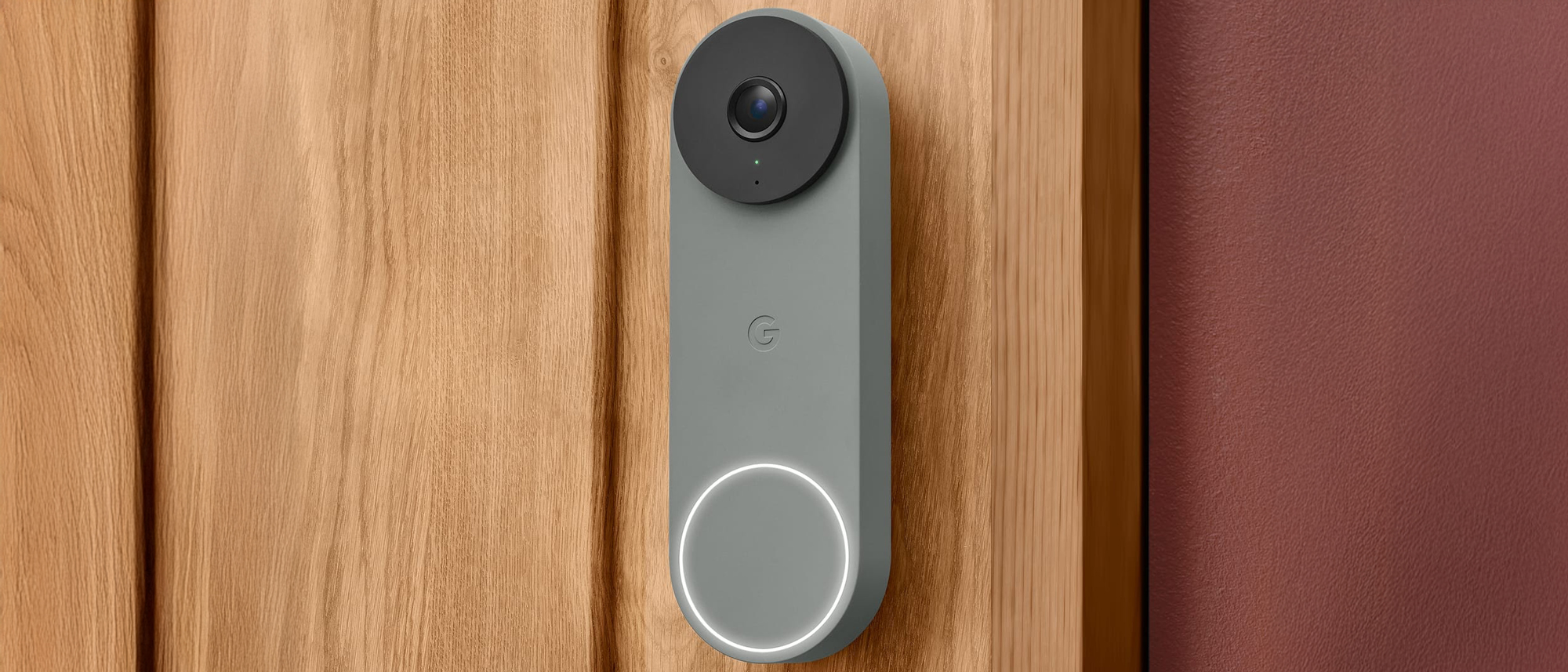Roomba vs. Shark: Which robot vacuum is best for pet hair?
In the battle between Roomba vs. Shark, which self-emptying robot vacuum will clean up better after your pets?
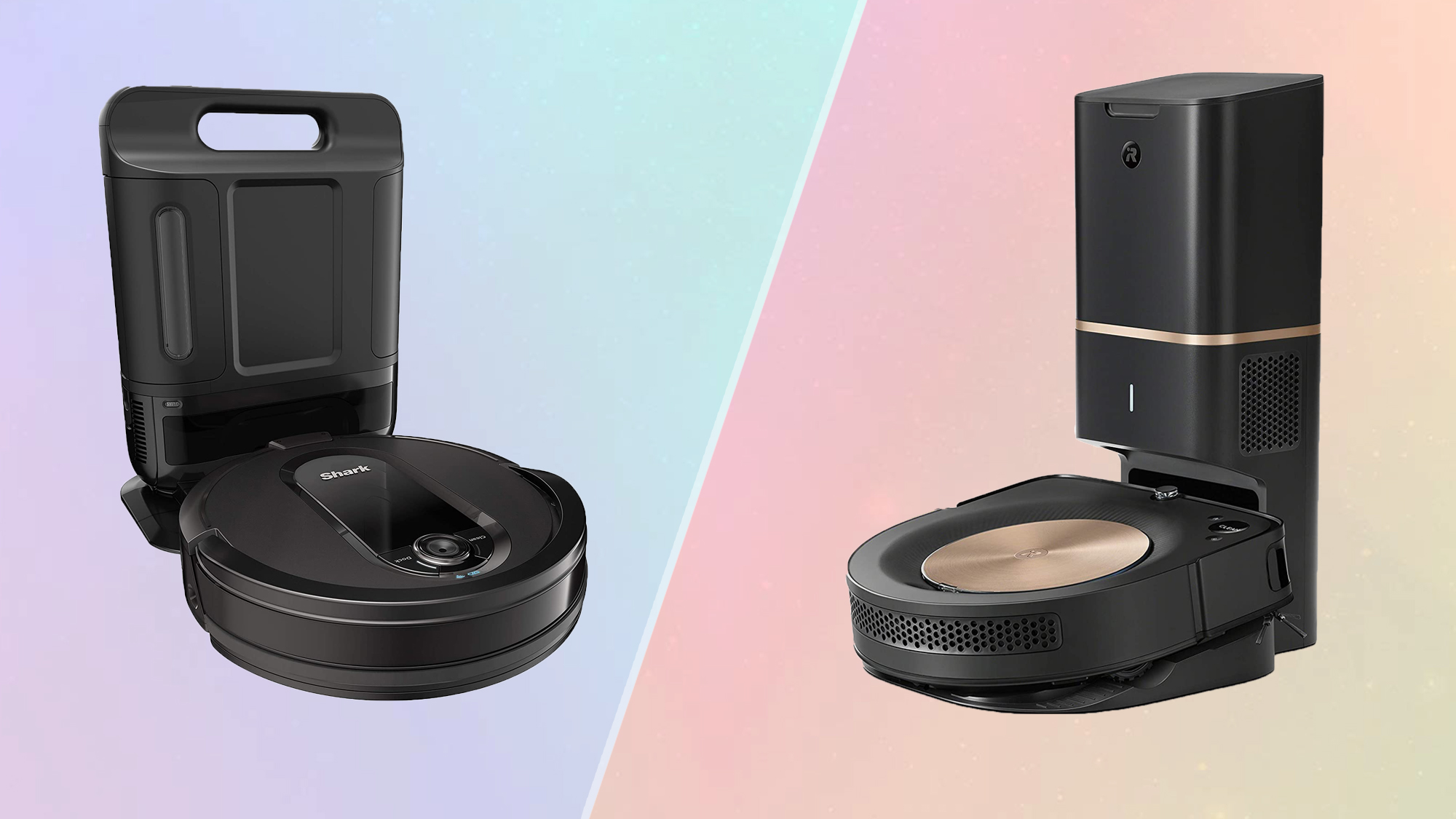
When it comes to the best robot vacuums, the choice for many consumers comes down to Roomba vs. Shark. Both companies have robot vacuums with a self-cleaning base, which means you don’t have to empty the vacuum after each use. Both companies’ robot vacuums can be controlled by your phone, Alexa, or Google Assistant, and both Shark and Roomba’s vacuums have mapping.
But which robot vacuum is best for keeping Fido’s fur off the floor? Read on to find out.
- The best robot vacuums in 2021
- Robot vacuum buying guide: What you need to know
- The new Roomba j7+ is the first robot vac guaranteed to avoid pet poop
| Row 0 - Cell 0 | Shark IQ | Roomba i3+ | Roomba s9+ | Roomba i7+ |
| Price with self-emptying base | $479 | $599 | $1,099 | $799 |
| Size | 12.9 x 12.6 x 3.5 inches | 13.26 inches x 13.34 x 3.63 inches | 12.3 x 3.5 inches | 13.3 x 3.7 inches |
| Weight | 5.87 pounds | 7.44 pounds | 8.2 pounds | 7.4 pounds |
| Mapping | Yes | Row 4 - Cell 2 | Yes, up to 10 floors | Yes, up to 10 floors |
| Smart Home | Alexa, Google Assistant | Alexa, Google Assistant | Alexa, Google Assistant | Alexa, Google Assistant |
Roomba vs. Shark: Price
The first difference between the Shark IQ and Roomba’s offerings are readily apparent—the Shark IQ with Self-Empty Base is $479 while the Roomba s9+ with Clean Base costs $1,099, more than twice as much. Things get even better with one of our Shark promo codes, letting you snap up a Shark vacuum for significantly less than Roomba models go for.
That’s a lot of kibble. The older Roomba i7+ with Clean Base hits the sweet spot between the two at $799.
More recently, iRobot introduced the Roomba i3+, which has a starting price of $599; that’s $100 more than the Shark, but far more palatable.
Roomba vs. Shark: Design
The Roomba s9+ is the best looking robot vacuum we’ve seen, but the Shark IQ is no slouch either. Next to each other, they look like the robot vacuum equivalents of Brad Pitt and George Clooney.

The round Shark IQ classes up your floors dressed in a tasteful mix of glossy black and matte black plastic with brushed silver accents on top. The underside of the IQ features two large, grippy rubber wheels on either side and a small caster wheel up front. Two single spoke brushes spin near the front of the bot, feeding debris to the V-shaped bristle-and-fin brushroll in the center. While we’ve seen this combination on other robot vacuums, this one seemed especially prone to getting pet hair stuck around it.
Get instant access to breaking news, the hottest reviews, great deals and helpful tips.
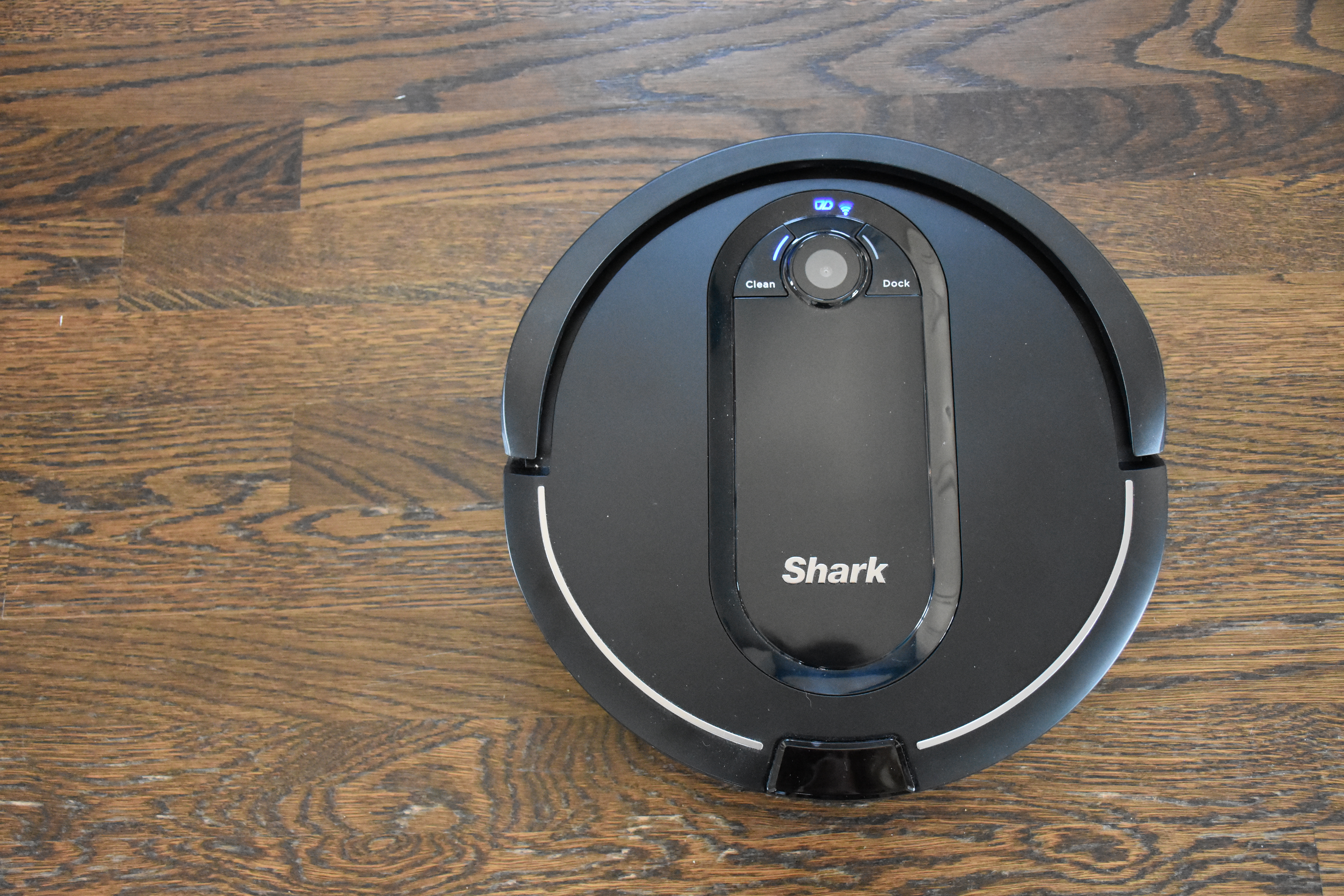
The Roomba s9+ is clad in matte black plastic with a recessed brushed bronze disc in the center that’s outlined in white light when the vacuum is cleaning. It’s iRobot’s first D-shaped vacuum and the company says this shape will allow the bot to get closer to corners and edges. The corners are softened so the vacuum looks more like a circle that was gently stretched out to a square on one side. The underside reveals two bright green rubberized rollers that span nearly the entire length of the vacuum’s straight edge. One end of each roller is partly hollow, making it difficult to remove the hair and fur that collect inside of it. A small five-spoke brush sits near the front of the s9, just to the left of the rollers.
Though both vacuums measure 3.5 inches high, the Roomba s9+ is much heavier, weighing 8.2 pounds, compared to the Shark IQ’s 5.87 pounds. If you’re moving the vacuum between floors frequently, you may want to give your back a break.
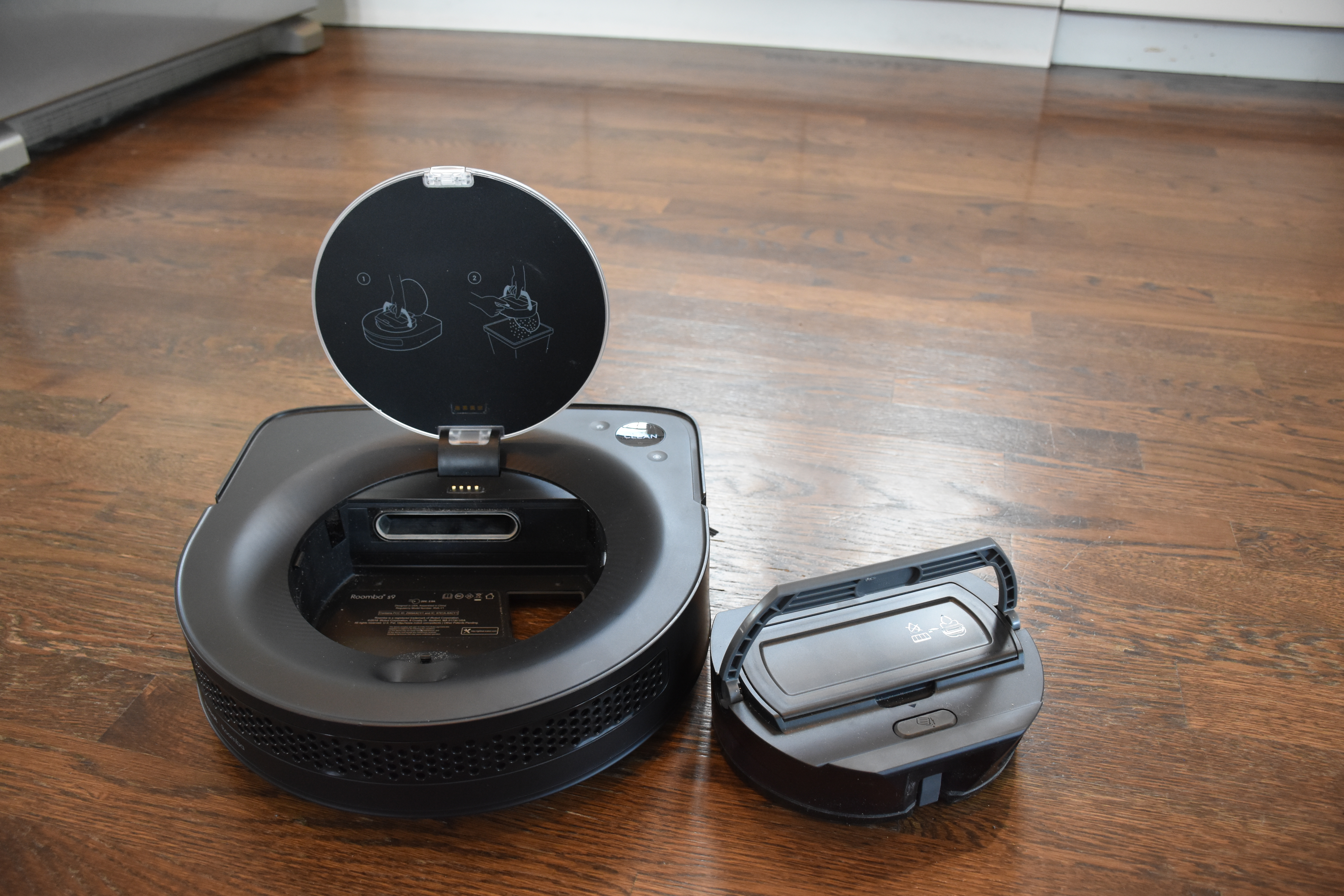
The self-emptying bases are what really set the Shark IQ and the Roomba s9+ apart. The Shark base has a much smaller footprint, which we preferred as it was less of a tripping hazard. While both hold up to 30 days worth of dirt, the Roomba Clean Base uses a bag to hold it all while the Shark Self-Empty base is bagless. On the Shark base, one button near the handle releases the bin from the dock; a second at the base drops the bottom out to release the debris. The force with which it opens is surprising. Gravity dropped most of the debris into the trash can, but a thin puff of dust also flew up into the air. For people who are especially sensitive to pet dander, this is a less than desirable feature.
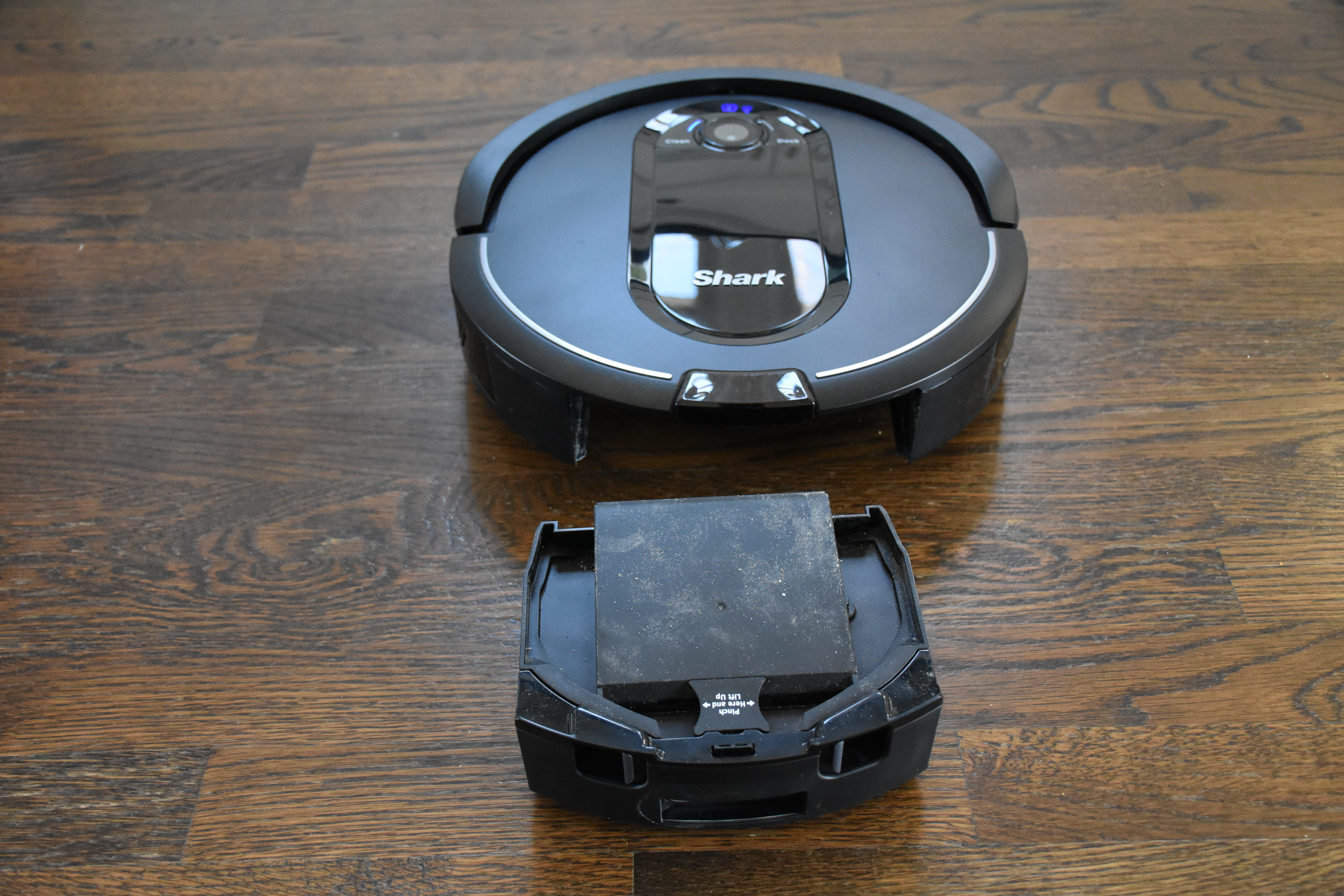
The cube-shaped vacuum bag inside of the Roomba Clean Base seals itself when you remove it, trapping everything the robot vac collected inside. While having to purchase disposable bags isn’t ideal, it kept us from sneezing. The bags are available in packs of three for $14.99.
Roomba vs. Shark: Cleaning Performance
When Rex’s shedding season comes, you’re going to want a robot vacuum that can clean up his fur as fast as it falls. Though easily visible on bare floors, pet hair can become entangled in carpet fibers, making it both less visible and harder to remove. Plus, dust and dander can settle in rugs, leaving you sneezing long after Rex has gone to doggie daycare.

In our lab tests, the Roomba s9+ vacuumed up an impressive 97% of dog hair on carpet and 99% of the dog hair on hardwood for an average score of 98%. On a similar test performed in a larger space, the Shark IQ cleaned up just 50% of dog hair on carpet and 83% of hair on hardwood, earning an average score of 66.5%. For comparison, the Roomba i7+ picked up 93% of dog hair on carpet and 88% on hardwood for an average score of 90.5.
Feline pursuits suited the Shark IQ a bit better in our tests. The Shark collected an average of 77.5% of kitty litter on hardwood and carpet, though it was still no match for the Roomba s9+ which earned a perfect kitty litter pick up score on both surfaces. The Roomba i7+ was, once again, in the middle, picking up an average of 87.6% of the litter.
We have yet to test the Roomba i3+, but when we do, we’ll update this chart.
| Row 0 - Cell 0 | Shark IQ | Roomba S9+ | Roomba i7+ |
| Dog Hair Average Score | 66.5 | 98* | 90.5 |
| Kitty Litter Average Score | 77.5 | 100* | 87.6 |
*Same test performed in a smaller 5 x 5-foot area.
Roomba vs. Shark: Features and App
Along with self-emptying bases, the Shark IQ, the Roomba s9+, and the Roomba i7+ all offer floor mapping, selective room cleanings, scheduling capability, and recharge and resume cleaning. The Roomba i3+ offers all of the above except selective room cleanings.

With the s9+ and the i7+, Roomba offers more granular control, letting you create “Keep Out Zones” and “Clean Zones.” One creates a safe space for your dog’s pile of toys, while the other focuses on areas that get the most traffic, such as an entryway. Neither option is available with the SharkClean app or the Roomba i3+.
Customize the amount of suction you want on the Shark IQ by selecting Eco, Normal or Max modes. Unsure which areas of your home need more attention? The Roomba s9+ has a feature that automatically detects when there’s more debris, such as kitty litter, in an area and applies extra suction in addition to going back and forth over the area.
Need to quickly vacuum a small area thanks to Cleopawtra knocking over a bowl of nuts? Both the Roomba s9+ and the Roomba i7+ feature an onboard button for spot cleaning. Simply put the robot where the mess is and it will clean the area using a spiral motion. The Shark IQ only offers two cleaning pattern options: manual and mapping.
We greatly preferred the mapping ability on the Roomba s9+ and the Roomba i7+. Both created accurate maps of our first level in three runs. The Shark IQ was a different story. After several issues with our first two Shark IQs, the third bot finally completed a map after 11 runs.
Roomba vs. Shark: Maintenance
Pet hair, especially longer dog hair, is a frequent nemesis of robot vacuums since it tends to get wrapped brush rolls easily. This was true with the Shark IQ, the Roomba s9+, and the Roomba i7+ which all accumulated a lot of hair around their brush rolls. Thankfully, releasing the brush rolls on all three vacuums was easy and then it was just a matter of pulling the excess hair off the center and the spokes on the edges. A lot of hair collected inside the partially hollow spoke on the s9+ and i7+, but it wasn’t difficult to remove. Similarly, the cap on one side of the IQ’s brush roll can be quickly removed to get at hair wrapped around the barrel.
The Shark IQ also gathered quite a bit in its front caster wheel. So much, in fact, that we had to remove the wheel to clean it out. Thankfully, the wheel is meant to pop out for just that purpose.
Cleaning was easy with both robot vacuums, which meant it didn’t take long to send them back to work.
Roomba vs. Shark: Which is best for you?
Like most family members, pets often forget to clean up after themselves. That’s where the robotic help comes in. But no matter which robot vacuum you choose, it’s likely that when the self-emptying dock roars to life the first time, your dog will freak out. Don’t worry, he’ll get used to it (my dog certainly did) and you’ll come to appreciate that his fur isn’t flying all over the house.
Unfortunately, this is barely a fair fight. The Shark IQ just doesn’t offer the same level of performance as the Roomba s9+ or even the Roomba i7+. We were rooting for the underdog, but mapping and performance issues held it back. For keeping your home fur-free, we recommend the Roomba s9+.
Meghan McDonough is a journalist who currently tests and writes about robot vacuums. Since 2008, she’s written about laptops, mobile phones, headphones, speakers, and other consumer tech. When she sees an unfamiliar device, Meghan has a habit of asking complete strangers, “What is that? Does it work well for you?”
In her spare time, Meghan enjoys seeing live music, tending to her garden, and playing endless games of fetch with her Goldendoodle, Duke of Squirrel.

